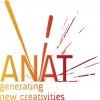When we look at spaces designated for creative expression in our culture they are generally neatly delineated, tightly packaged, copyright protected and demographically assigned.  From social networking sites, art and design studios, galleries, mobile and tv screens, games, cinemas, domestic interiors, to sanctioned static singular public sculptural displays. Interaction and response is generally restricted, and these domains of cultural real estate are presided over/programmed by individuals or small committees of a certain authority.
From social networking sites, art and design studios, galleries, mobile and tv screens, games, cinemas, domestic interiors, to sanctioned static singular public sculptural displays. Interaction and response is generally restricted, and these domains of cultural real estate are presided over/programmed by individuals or small committees of a certain authority.
Curators, funders, programmers and censors become arbiters of popular opinion and defenders of moral standards whether they be promoting or opposing any cultural artefact. Yet my sense of popular culture it seems is not the same as theirs, or maybe yours. Every moment I spent in public space, supermarkets, or online seems to be under the surveillance of bizarre icons of contemporary culture – the vacant gaze of anorexic celebrities and buff soccer stars meets me at every turn. Not only do I find this scary, but aesthetically and morally offensive.
So just whose space is public space? Their space? My space? Our space? Your space?
In the early 21st century, as we recover from the demise of many art and technology organsiations and media galleries during the first technology bust, the focus of space and ownership is again becoming critical – art prices are soaring and new fodder is being sought for an insatiable cracked up market. Banksy inscribed walls are hot commodities, just as canvasses by Basquiat were 20 years ago. Information did want to be free in the 20th century, but it seems it’s angling for revenue share in the 21st century.
Not content to be filtered through the art funnel, or waiting to be discovered on mySpace, facebook, uTube or Flickr, artist intervention into physical social space is rapidly rising. Artists discard barricades and insert themselves into streets, laneways, alleys, shopping centers, video games, artists books, cooking shows, impromptu slide projections, disused malls, pirate film screenings, web2ness, knitting groups, web cam hacking, planting non-GMO seeds in gullies – slipping through cracks and across borders.
When creative content takes root in places outside of its defined margins the outcomes are often unpredictable – the graffiti covered alleyways of Melbourne’s CBD have been voted the cities biggest tourist attraction by a Lonely Planet web poll. Seeking high visibility, other artists intelligently utilise the tools of consumer society to comment upon it, like the large-scale Hyperplex multi-LED work inserting awareness of world politics into Sydney’s monstrously seductive Bondi Junction Shopping Centre.
Our day-to-day world can be filled with something other than bland predictability –the spaces you inhabit do contain plentiful pockets of diversity and complexity, rich surface and deep texture, contrast and tension, poetics and challenge, animation and surprise. And if you cant find it – make your own. As our special guests Graffiti Research Laboratory say “join us in the fight to have fun in public.”
Melinda Rackham
Melinda was the Executive Director at ANAT from 2005 to 2009.
 This work is licensed under a Creative Commons Attribution-NonCommercial-ShareAlike 2.5 Australia.
This work is licensed under a Creative Commons Attribution-NonCommercial-ShareAlike 2.5 Australia.






